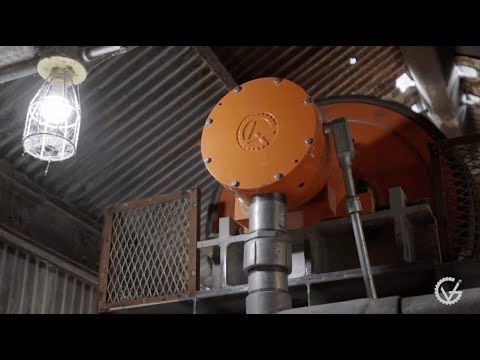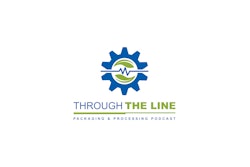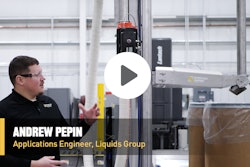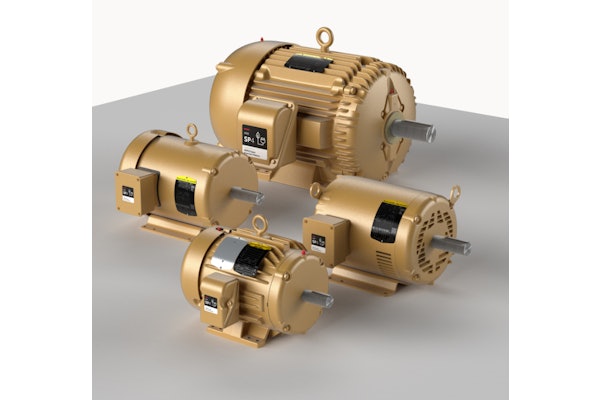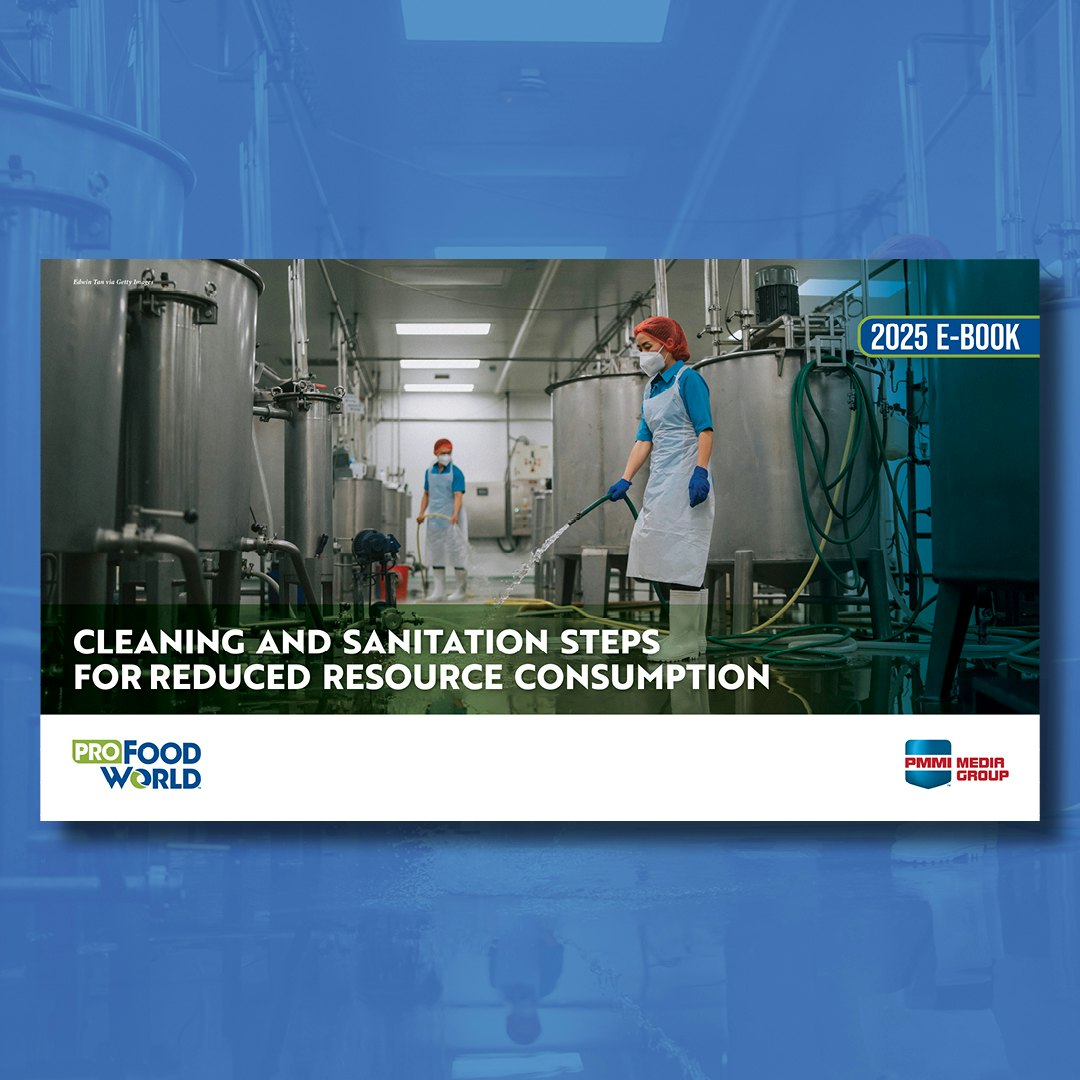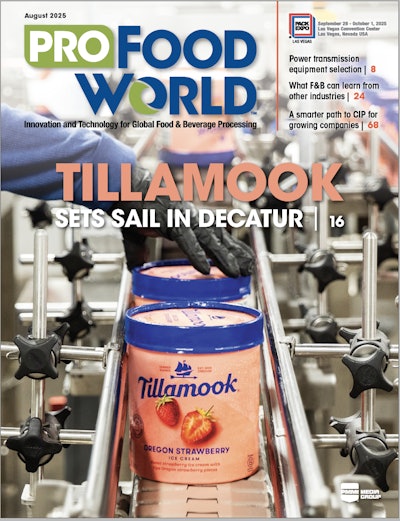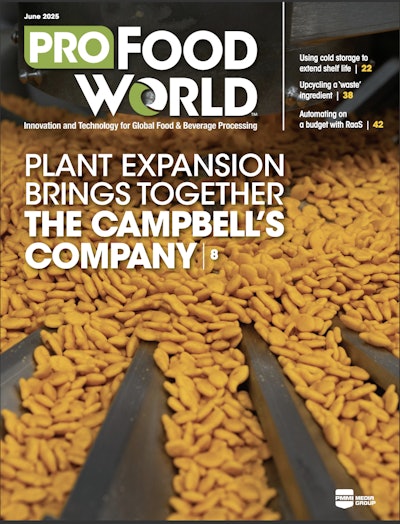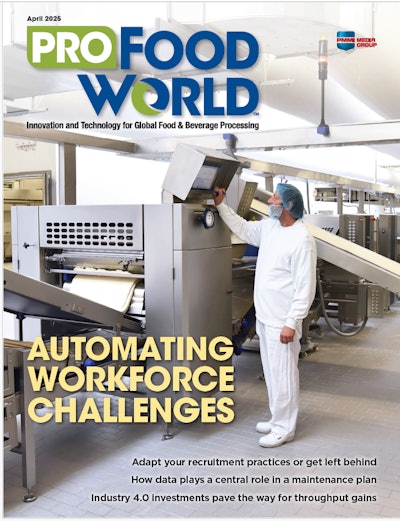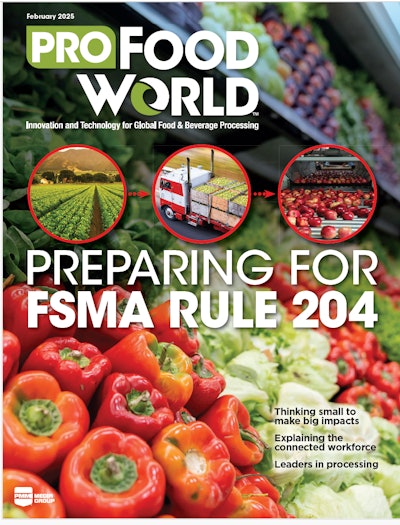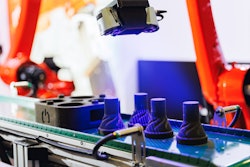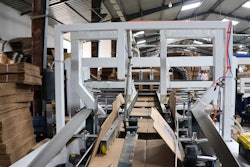A growing awareness of regulatory compliance, energy mandates, and total cost of ownership is pushing F&B professionals to ask more from their power transmission partners. They’re realizing the wrong motor, belt, or gear reducer can spell big trouble in an environment where downtime is measured not in minutes, but in dollars.
ProFood World spoke with experts across the sector—from motor and drive manufacturers to belting system innovators—to get their take on what every F&B operation needs to know to choose wisely and run efficiently.
Zone awareness: the first rule of smart specification
Every conversation about power transmission in food production should begin with the word “zone.”
That’s because F&B facilities operate in highly controlled hygiene zones, and each one demands different performance characteristics from its equipment. Misunderstanding—or ignoring—these zones can lead to costly, even dangerous mistakes.
“Zone 1 is your food contact zone,” says Brandon Canclini, Global Product Manager at ABB NEMA Motors Inc. “It sees the harshest washdown conditions—high-temp, high-pressure caustic chemicals. You cannot put a general-purpose motor there. It will fail quickly.”
ABB structures its product offerings around a three-zone model:
- Zone 1 (Food Zone): Direct food contact or high probability of splashback. Requires IP69-rated, fully sealed, stainless-steel motors like ABB’s Food Safe SP5.
- Zone 2 (Splash Zone): Indirect exposure. Washdowns still occur, but not as frequently or aggressively. Here, ABB recommends its IP55+ rated white washdown or paint-free motors.
- Zone 3 (Dry Zone): Packaging or warehouse areas with no washdown risk. Standard general-purpose motors—like ABB’s high-efficiency SP4 line—are appropriate and more cost-effective.
“If someone puts a food-safe motor in a dry zone, it’ll work,” Canclini says. “But it’s overkill. That customer’s overspending where they don’t need to.”
This zone-specific approach isn't unique to motors. Belts, bearings, and gearboxes must also be selected with zone compatibility in mind.
“Our belting solutions have to withstand not just torque and tension, but chemicals, moisture, temperature variation, and microbiological risk,” explains Kyoyul Oh, Vice President and General Manager of Power Transmission & Fluid Power Products at AMMEGA. “We must understand exactly how and where a belt is being used—from sanitation chemicals to mechanical wear over time.”
Awareness also matters when it comes to what’s in your facility. Tom Ellis, Industry Solutions Advisor for SEW-EURODRIVE’s Food & Beverage Corporate Engineering department says that he deals with an issue on a weekly basis called variant management.
“The end user doesn't want 500 different combinations of an SCW gear motor. What they want to do is try to narrow that down where they get the same unit over and over,” he says. “So then, if they have to stock a spare, they only have to stock one type.” This is important in an industry where there is a limited amount of space for storing replacement parts.
Richard Vaughn, Manager, Product Management - Linear Technologies at Bosch Rexroth says, “The main acronym that we advise manufacturers to consider when evaluating both components and larger solutions is ‘LOSTPED.’ This is broken down into Load, Orientation, Speed, Travel, Precision, Environment, and Duty. Many factors determine how successful a solution is, and if any of those factors are overlooked, it can lead to premature wear and/or negatively impact operations. Also, it’s important to evaluate the quality of each component. While it may be tempting to consider a cheaper alternative for the initial purchase, that decision can be costly if the solution breaks down faster and requires additional downtime to maintain.”
Get in early—and with the right people
One of the most important pieces of advice shared by all our sources? Engage your vendors early.
It’s a statement that we hear a lot, regardless of the task. In this case, OEMs too often make component selections based on cost or availability without fully understanding the sanitation or efficiency requirements of the facility where the equipment will be installed.
“OEMs will often opt for lower-cost components to win bids,” says Alex Kanaris, President of VDG. “But the long-term benefits of our drum motors—like hygiene, reliability, and ease of maintenance—are seen by the end user. That’s who we focus on educating.”
For example, VDG spent more than a decade developing stainless steel drum motors specifically for the food industry. These units have no external cooling fans and rely on internal oil circulation to dissipate heat.
“Modular belts don’t give full contact for heat dissipation,” Kanaris explains. “And stainless steel doesn’t release heat as efficiently as mild steel. We had to redesign the entire electric motor to run cool without any external cooling mechanism.”
That redesign included:
- Using advanced M400-grade steel in the rotor and stator, which cuts energy losses in half compared to traditional materials.
- Enlarging the motor’s core for improved efficiency and horsepower recovery.
- Implementing pressure equalization membranes to manage internal pressures caused by heat expansion—preventing seal failures and oil leaks even under 3,000 psi washdown conditions.
“Manufacturers need to have a consistent dialogue with suppliers, especially given the fluid nature of the CPG industry,” says Vaughn. “Processes need to be flexible to respond to market shifts, and by having an innate relationship with a trusted supplier, manufacturers can implement solutions that can respond to those shifts and, if need be, scale to meet growing needs with a particular product vertical.”
Why getting it wrong costs more than you think
The temptation to save money by specifying lower-cost components is understandable. But experts warn it’s a false economy.
“We’ve seen people save a few hundred bucks on a motor and then lose thousands when it fails early in a washdown zone,” says Canclini. “It’s not just about purchase price. It’s about lifecycle cost, downtime, and risk.”
Kanaris adds that overheating due to improper component selection can degrade lubricants and damage gearboxes.
“When the motor runs too hot, the oil viscosity drops. At 100°C, we measured oil dropping to 7.2 centistokes. That’s basically no lubrication,” he says. “You’re looking at premature failure of internal components.”
Canclini summarizes it well: “If you don’t spec right, you’re not just risking breakdowns—you’re putting food safety, regulatory compliance, and your entire line performance on the line.”
Efficiency matters: preparing for 2027 and beyond
In June 2027, the U.S. Department of Energy (DOE) will require that motors between 100–250 HP meet NEMA Premium Level 4 (IE4) efficiency. ABB has already introduced its SP4 platform to meet and exceed that standard.
“We launched our SP4 general-purpose motors early—almost three years ahead of the regulation,” Canclini says. “This gives OEMs and end users time to integrate these products into their designs.”
Unlike traditional IE3 motors, SP4 motors can be used across the line or with a drive, offering flexibility for facilities that want variable speed but aren't ready for a full system overhaul.
Efficiency goes beyond motors. Entire systems can be optimized when motors are paired with drives.
“You can talk about motor efficiency all day, but if you don’t consider system efficiency—motor plus drive—you’re missing the big picture,” says Canclini. “That’s why we now present our motors alongside the corresponding ABB drive in every application.”
The smart factory needs smart power transmission
The power transmission sector is now embracing Industry 4.0, with intelligent systems capable of sensing, reporting, and adapting in real time.
“We’re embedding sensors into belts—what we call smart belts,” says Oh. “These monitor load, heat, and stress. If a belt is over-tensioned or nearing failure, it tells the system.”
This allows for predictive and prescriptive maintenance—not just reacting after a failure, but planning service proactively.
“It’s like human physiology,” Oh says. “You want muscles to ache before bones break. A belt should fail before your gearbox does. But ideally, it won’t fail at all because the system tells you when it needs attention.”
This involves integrating sensor data with AI and machine learning to understand normal versus abnormal behavior—even accounting for legacy equipment.
“If I put a new belt on a five-year-old system, the load will differ from a brand-new install,” Oh says. “AI can learn from this and adjust expectations accordingly. That’s what makes it powerful.”
What about legacy equipment?
F&B facilities are often home to aging assets—sometimes decades old—that still work but may not meet today’s standards for efficiency or sanitation.
“Some motors from the 1930s are still in operation,” says Oh. “We have to design belts that not only fit, but bring those systems closer to modern performance.”
This can involve:
- Upgrading belts to reduce friction and heat buildup
- Replacing pulleys and bearings to reduce particulate generation
- Installing external sensors to monitor temperature and vibration
- Using materials that meet current USDA, NSF, and FDA requirements—even if the equipment predates those regulations
Retrofitting also plays a role in meeting energy standards. According to Oh, incremental improvements—better cords, optimized materials, smaller drive footprints—can result in significant energy savings over time.
“We don’t always need revolutionary upgrades,” he says. “Sometimes, piece-by-piece retrofits achieve the same goal.”
Customization is the new standard
Customization is no longer a luxury—it’s a baseline expectation. At VDG, Kanaris describes how the company’s new XP (extendable profile) system allows users to quickly change belt profiles on a drum motor without replacing the whole unit.
“We used to mount sprockets for each belt type, but now we cut belt profiles directly into sleeves,” he says. “You just swap the sleeve, not the motor.”
This saves time during changeovers and improves sanitation by eliminating mechanical interfaces where food particles could hide.
Says Vaughn, “Processes need to be flexible to respond to market shifts, and by having an innate relationship with a trusted supplier, manufacturers can implement solutions that can respond to those shifts and, if need be, scale to meet growing needs with a particular product vertical.”
Your vendor should speak the language of food safety
Every component in a food facility must comply with a litany of regulations: USDA, FDA, NSF, EHEDG, and more. Working with vendors who understand these standards—and actively design for them—is critical.
“We build every component with hygiene, traceability, and cleanability in mind,” says Oh. “Not just for today’s standards, but for where the industry is headed.”
Canclini echoes that sentiment: “We’re trying to educate customers not just on what’s available, but on what’s coming. We want you to be ahead of the DOE 2027 regulations, not scrambling to comply after the fact.”
A checklist for power transmission product selection
Whether you’re building new lines or upgrading old ones, here’s a checklist based on expert recommendations:
- Identify the zone – Food, splash, or dry? Sanitation intensity will determine ingress protection and material selection.
- Understand the environment – What chemicals, temperatures, and pressures will the equipment be exposed to?
- Know your process – Is variable speed needed? What torque and acceleration requirements exist?
- Review regulations – Do components comply with NSF/USDA/FDA? Will they meet DOE 2027 standards?
- Plan for the long term – Evaluate total cost of ownership, including efficiency, maintenance, and service intervals.
- Engage the right vendors early – Don’t rely solely on the OEM’s spec. Bring in your vendors to consult and educate.
- Ask about smart options – Can the system provide health monitoring or predictive maintenance alerts?
- Account for legacy integration – Ensure new components won’t introduce compliance or compatibility issues.
- Request documentation – Traceability, sanitation validation, and efficiency certifications should be available.
- Think modularity – Look for changeout-friendly solutions to reduce downtime and improve sanitation.
Know the zones, know the risks, know the rewards
Power transmission systems in F&B facilities are more than a mechanical detail—they’re a linchpin of safe, efficient production. Choosing the right motor, belt, or gearbox isn’t just a matter of specs. It’s about fit, function, and future-readiness.
As Canclini puts it, “The motor industry has shifted. It’s not about throwing any motor into any environment. It’s about designing solutions for specific applications—and educating customers on how to use them properly.”
Whether you're running a bakery, dairy plant, bottling line, or protein processing facility, investing time in smart power transmission decisions pays off in uptime, compliance, and peace of mind.
“We’re not just selling components,” Oh says. “We’re selling performance, safety, and trust. That starts by asking the right questions—and working with partners who know the answers.”


